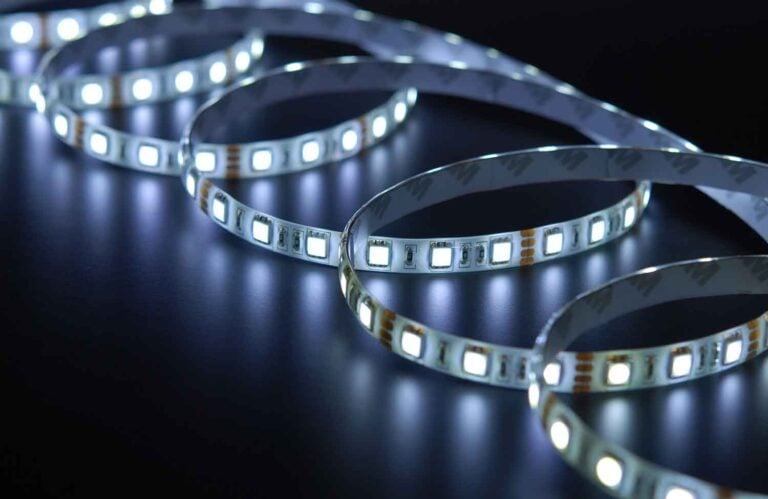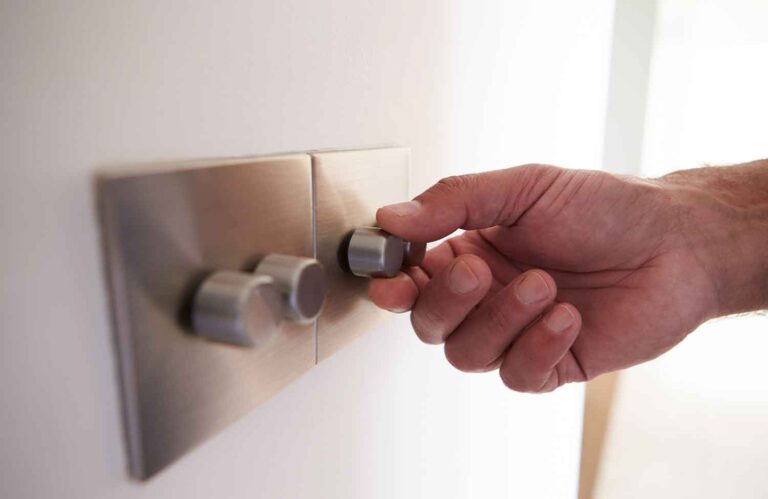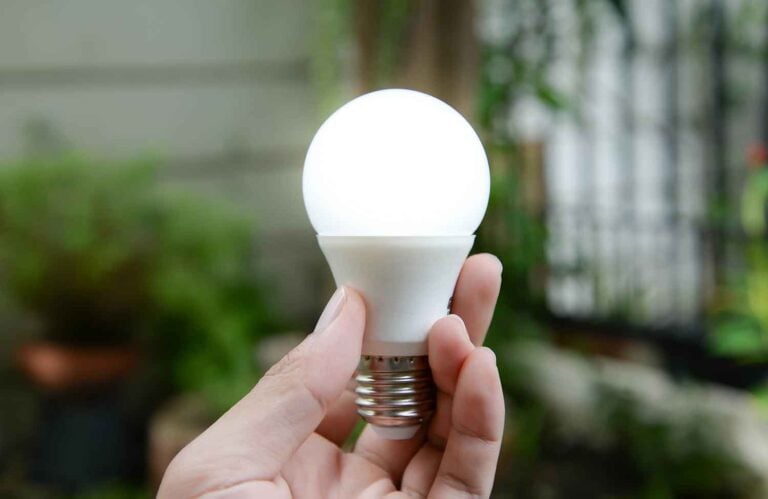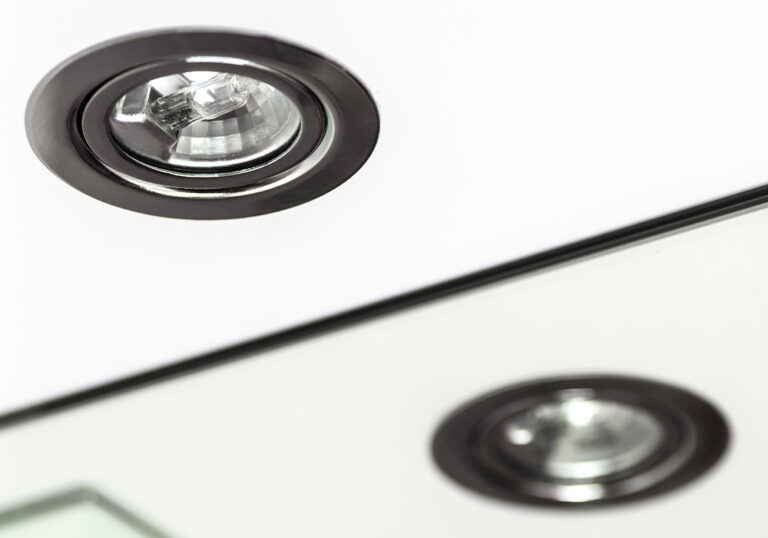Can an Integrated LED Bulb Be Replaced?
Integrated LED fixtures are a modern form of LED lighting that’s becoming an increasingly popular choice among consumers. Their intentional design means that integrated fixtures come with exceptionally long lifespans; you could get almost two decades of daily use from an integrated fixture before the bulbs start to die. However, whether it’s due to ageing or a premature fault, all LED bulbs will eventually die out. This raises the question of whether it’s possible to replace bulbs in an integrated fixture as you can with traditional forms of lighting.
No, it isn’t possible for LED bulbs in integrated fixtures to be replaced. In traditional lighting fixtures, the bulb and fixture are two independent units, making it possible to swap out blown bulbs. Integrated fixtures are instead one single unit, as the bulbs are fused into the fixture’s circuitry; this removes the ability to replace the LEDs if one or multiple bulbs die out. When a bulb fails in an integrated fixture, your only option is to have the entire fixture repaired or replaced.
What Are Integrated LED Lighting Fixtures?
Integrated LED lighting fixtures are a type of LED fixture that have the bulbs built-in, forming one single lighting unit. In comparison, regular fixtures involve an LED bulb that you place into the bulb base on the fixture; the bulb and the fixture are two separate units. The bulbs within integrated LED lighting fixtures are instead built directly into the fixture’s circuitry.
Over the past few years, integrated LED lighting fixtures have become an increasingly popular choice over their predecessors. These older fixtures are known as ‘retrofit lighting’ and are rapidly becoming obsolete due to advances in lighting technology. The reason behind the invention of retrofit lighting is that, in the past, bulbs typically had very short lifespans. This led to companies manufacturing light bulbs and fixtures as separate units, granting the ability to swap out blown bulbs. Keeping the parts separate made it possible for consumers to replace blown bulbs instead of wasting an entire fitting.
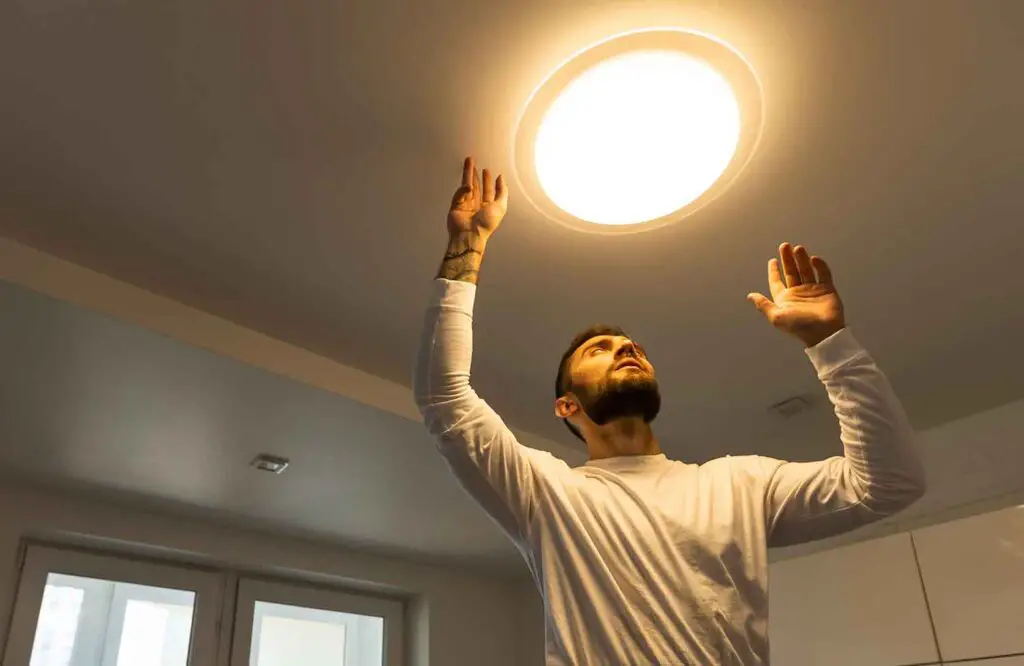
Although this was an ideal solution at the time, the advent of LED bulbs has all but eradicated its necessity. LED bulbs last significantly longer than traditional bulbs; LEDs can last as long as 100,000 hours of use, whereas incandescent bulbs max out at 1,000 hours. You can go 10 to 20 years without having to change a blown LED bulb. This is giving rise to the increase in the popularity of integrated fixtures; manufacturers are recognising that it’s more convenient for consumers to purchase the fixture and bulbs as one complete unit.
Integrated LED lights are typically able to connect directly to your home’s mains supply without needing other accessories or parts. They differ from LED-ready fixtures as the diodes are already set at a particular colour temperature and lumen output.
What Are the Pros and Cons of Integrated LED Lighting Fixtures?
Pros of Integrated LED Lighting Fixtures
Have a Long Lifespan: Integrated LED fixtures typically come with a longer lifespan than screw-in fixtures. Compared to these older fixtures, integrated LED lights contain more components which are built to last longer. The longer lifespan also has a lot to do with the heat management systems of integrated fixtures; they are highly efficient at managing the dissipation of excess heat that the fixture produces. Thanks to these features, integrated LED fixtures can last for 50,000 hours of use before they begin to deteriorate.
Have a Higher Lumen Output: In comparison to traditional types of lighting, integrated fixtures usually provide a higher lumen output. In other words, the light from an integrated fixture is typically brighter than other types of fixtures.
More Convenient than Retrofit Fixtures: Integrated fixtures are by design much more convenient than retrofit fixtures. After purchasing and installing an integrated fixture, you can essentially forget about it until it dies, usually decades later. This cuts out the need to replace bulbs when they blow as is necessary with retrofit fixtures. In this respect, integrated fixtures are ideal for difficult-to-reach places where replacing blown-out bulbs would be difficult.
No Need to Match Bulb to Design: Aesthetically, you have a lot more choice with integrated LED fixtures versus retrofit fixtures. Design choices are limited with retrofit LEDs as these bulbs are manufactured to be compatible with older lighting fixtures. Integrated fixtures bypass this issue as they’re specially designed for LED bulbs in the first place. Not only are the designs more modern, they can also be much more compact than older fixtures.
Cons of Integrated LED Lighting Fixtures
More Complicated to Install than Retrofit Fixtures: The installation process with an integrated fixture can be a little more complicated than retrofit fixtures.
More Expensive to Purchase: Integrated LED fixtures are typically more expensive than those that are retrofit. They can be more than double the price to purchase outright. So, if you’re on a budget, integrated lighting fixtures may not be the best choice. However, keep in mind that the longer-term costs of an integrated fixture will be lower than a retrofit fixture; you won’t need to spend any money on replacing blown bulbs over the years that you use an integrated fixture.
No Ability to Customise or Upgrade Bulbs: You won’t be able to customise or upgrade the bulbs in an integrated fixture after purchase. With retrofit bulbs, it’s only necessary for the bulb to match the fixture; aside from this, you have a lot more option with the size, colour, shape, and wattage of the bulb. You can swap out the bulbs for different designs as you please. This freedom is taken away with integrated bulbs as you’re limited to the manufacturer’s original design. Even so, you can still pick a design that suits your preferences at purchase.
Inability to Replace Blown Bulbs: If a bulb blows in an integrated fixture, it isn’t possible to replace the blown bulb with a new one. You’ll need to uninstall and replace an integrated fixture entirely, even if just one bulb blows. Retrofit bulbs offer this advantage as the fixture and bulb are two separate units. The bulbs in an integrated fixture are connected to the fixture’s circuitry making both parts one unit. Because of this design, it’s impossible to replace the bulbs in an integrated fixture.
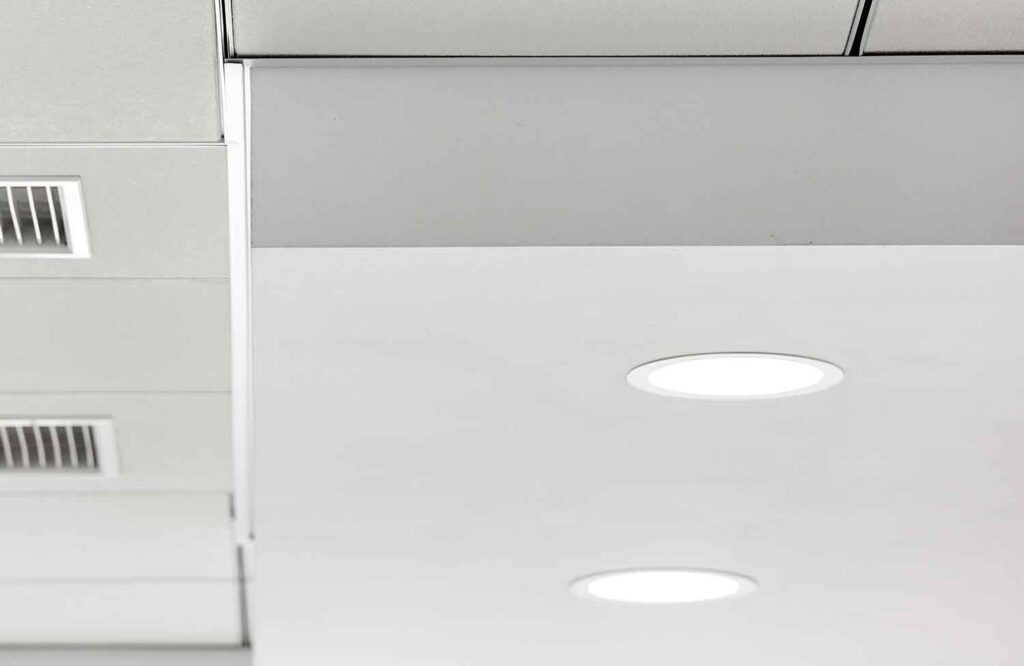
How Long Should an Integrated LED Fixture Last?
The average lifespan of an integrated LED lighting fixture is around 50,000 hours. This means that, with 10 hours of daily use, an integrated fixture can last almost 14 years before needing replacement. For comparison, a standard retrofit LED bulb has a shorter lifespan of between 15,000 and 30,000 hours.
Can an Integrated LED Bulb Be Replaced?
No, it isn’t possible to replace an LED bulb in an integrated LED fixture. The bulbs in integrated fixtures are built directly into the fixture’s electrical circuit board, making both parts one single unit. This design eliminates the ability for the consumer to replace bulbs in the fixture if one or more bulbs blow.
Despite this limitation, you shouldn’t let it put you off purchasing an integrated LED fixture. These fixtures and their integrated bulbs and components are designed to last a long time; as we’ve mentioned, you could get up to 14 years of usage out of an integrated fixture before it dies. They offer the longest lifespan out of any other lighting fixture available, including regular LED lights.
What Do You Do When an Integrated LED Bulb Burns Out?
If a bulb in your integrated LED fixture does blow prematurely, you don’t have to dispose of it straight away. Before disposal, you can contact the manufacturer to check its warranty, or have it repaired by an electrician.
Check Warranty
If a bulb in your integrated fixture blows, you should first check the warranty for your product. Most manufacturers will provide a long warranty for integrated LED fixtures as they’re designed to be long-lasting. As long as you have a valid warranty, the manufacturer will offer to replace or repair your fixture for free.
Contact Manufacturer or Electrician for Repairs
If the warranty has expired or you lost your proof of purchase, you still have the option to contact the manufacturer for help. They should be able to provide you with a list of trusted specialist electricians that can inspect your integrated fixture. You could also do your own research and find an independent repair shop for the repairs.
Dispose of the Fixture
If it isn’t possible to repair your integrated LED fixture, then your only option is to dispose of it appropriately. Although they don’t contain mercury like other fixtures, integrated LEDs contain electronic components. This means you must dispose of the fixture as electrical waste rather than general household waste. You must therefore find a collection point or recycling centre that deals with electrical waste; you’ll also find that some shops and DIY stores accept defective fixtures as an alternative means of disposal.


